Jerry and Darla Arnold know how to do Christmas right. With thousands of antique Christmas ornaments in their collection, it takes almost two-dozen trees just to showcase a fraction of their bounty every year. Recently, Jerry spoke with us and shared his deep knowledge of German Christmas ornaments in the United States and the variety of materials used to make them—from the embossed cardboard ornaments made in Dresden to the wire-strung glass-bead ornaments of Czechoslovakia.
About 42 years ago, my wife, Darla, went to a very large white elephant sale and found a box of antique Christmas ornaments. She thought they were wonderful, so she bought them, and that’s been her passion ever since. Eventually, ornaments became my passion, too. We’ve been collecting for 42 years now. Our collection’s not the biggest or the best, but it’s very nice. We put up 23 antique feathered Christmas trees and they all have antique Christmas ornaments.
For a long time, we were very much against doing themed trees, but when you have several thousand ornaments and you’re trying to do something different every year, you eventually have to start doing themed trees. A few years ago, I had this idea to do a blue tree decorated only with blue ornaments, so I started setting aside everything that had blue on it. That turned out to be very successful tree. Many people liked it.
We also do a tree with birds and anything bird-related—glass birds, Dresden paper birds, tinsel birds, birdcages. I even put some real bird nests inside the branches. That makes it a little different.
We take a great deal of time with our displays. We don’t have a terribly large house, and with 23 trees, you have to be able to have friends come in and walk around without bumping into them, so we try and do clever arrangements. My wife particularly likes to create little vignettes on the shelves. If we have a small tree, she’ll put a little village around it with some tiny animals.
We have friends who come by every year because they like to see what we do, and we belong to a club called The Golden Glow of Christmas Past, so we invite other members to stop by, but we don’t host large groups. We’re not really open to the public, per se.
Collectors Weekly: Do you specialize in a specific type of ornament?
Arnold: No, we like everything. We have antique cottons, kugels, figural glass, Sebnitz ornaments, just anything and everything that’s antique. We collect from all over the world, but we find the best things primarily come from Germany. They seem to be the most creative, and they must be of the highest quality because they’ve lasted so long. They’re from the late 1800s through the 1920s.
It’s not so much the craftsmanship that attracts us to German Christmas antiques; it’s their ingenuity and cleverness, as well as the things they chose to make. They produced unusual things, sometimes very comical. I’m fairly certain they never thought these pieces would last as long as they did. They probably just had a very high work ethic.
My favorite items in our collection are the Dresden Christmas ornaments. They’re made out of very thin embossed cardboard and they were only made for a relatively short time, from about 1870 to 1910. When you first see them, they look like celluloid because of all the detail, but they’re actually embossed cardboard. You can actually see the fur on the animals, and with some of the birds, you can tell exactly what species they are. There’s an endless variety. There are transportation items, animals, people, household objects, and even candy containers. They don’t have candy in them anymore, but when they were originally purchased, they would have. Sometimes they would’ve had a little gift inside, too.
The Dresden factories would stamp out the parts, and then cottage workers would assemble the pieces at home. Some are painted. Most are either gold or silver, so they almost look like metal when you first see them. The cardboard has held up extremely well, although the ornaments as a group are relatively rare. The majority of them were made for export to America.
Collectors Weekly: Were American manufacturers making their own ornaments as well?
Arnold: That came much later on. That probably began in the 1930s and ’40s. Of course, during the world wars, that’s when America started to make its own ornaments.
Before that, everything was imported. Czechoslovakia had a large bead industry, and they made their ornaments out of small beads. That was one source. Italian ornaments started being imported in 1950, and the Japanese made ornaments, too. But, again, this was much later. Virtually everybody copied what the Germans were doing.
Collectors Weekly: How far back do Christmas ornaments go?
Arnold: There’s some written documentation of a decorated tree in the early 1600s, but broad popularity came much later. Virtually every little community in Germany and many countries in Europe had their own type of celebration and their own little figures that they made for Christmas. Eventually all those traditions and decorations came together into what we now call Santa Claus and Christmas.
The religious aspect of Christmas has stayed basically the same, but Santa Claus and the way we celebrate the holiday have evolved over the years. Santa Claus did not look like he does now in the late 1800s.
That’s one way to tell the age of a Santa Claus figure. The earlier ones had different colored coats—green coats, blue coats, brown coats. As the years progressed, he had a red coat with green pants or a red coat with blue pants, and then eventually he became all red.
It evolved slowly, but there were certain aspects that really helped it along, one of which was Sundblom’s Coca-Cola Santa. That version really changed America’s view of what Santa Claus should look like. He became jolly, overweight, and dressed entirely in red.
A version of the German Santa was called the Belsnickel. He was very stern and usually dressed in furs, and the parents would use him to try and keep the children in line at holiday time. They would say, “The Belsnickel is coming. You better behave,” because he was known to actually whip children and to give them lumps of coal instead of candy. In some areas, he was also known to take bad children away. That’s my favorite part, that scariness, and that all evolved into what we think of as the kind and generous Santa now who has lots of presents for all the children.
Presents weren’t always part of the tradition. That also evolved. In the early 1900s and earlier, fruit or some little pieces of candy were all a child could expect as far as presents were concerned.
Collectors Weekly: Can you tell us a bit about the Czechoslovakian beaded ornaments?
Arnold: They made many designs, from what I refer to as a simple snowflake type of design to baby carriages, cannons, bicycles, baby pacifiers, butterflies, spiders, and spider webs. These were made out of tiny beads strung together with wire, and then hand-shaped into ornaments. They’re very unique because no one else made beaded ornaments.
Collectors Weekly: What kind of glass did the Germans make?
Arnold: A lot of people think that the glass kugel balls were the first true Christmas ornaments. In fact, the German Christmas ornament industry evolved out of glassmaking. A lot of the Germans were glassmakers who made scientific equipment, test tubes and vials, that sort of thing. But there was also a glass-bead industry for fashion, particularly for hats and dresses. When glass beads for fashion went out of style, German glassblowers started making these round balls called kugels.
“During the wars, many of Germany’s best Christmas ornament collections were destroyed.”
The story is that they would hang these from the rafters in their cottages—some of them were as large as basketballs. Then they made smaller ones, and those eventually found their way onto Christmas trees. Different shapes followed. There was a teardrop shape, fruits such as strawberries, and even vegetables. The kugels all had a decorative brass cap that’s probably anywhere from the size of a dime up to a quarter or a 50-cent piece, depending on how the size of the ornaments. They were very distinctive.
The first kugels were made out of colored glass and silvered on the inside. Figural Christmas ornaments came later. They were made of clear glass, silvered on the inside, and then painted with lacquers on the exterior.
Collectors Weekly: What other types of materials did the Germans use to make Christmas antiques?
Arnold: We talked about the cardboard and the glass. They took some of the glass ornaments and wrapped them in wire. Those are called wire-wrapped ornaments. This was done more during the Victorian times when they wanted something a little bit more gaudy looking. Those pieces tend to be all tarnished today, so they have a rather drab look to them now, but they were very fancy and very shiny in their time. They reflected the candlelight from the Christmas tree.
Spun cotton was used to make cotton ornaments. Objects ranged from fruits to vegetables, but the most sought after cotton ornaments are the little animals and people. Many of them were dressed in crepe-paper clothes and they had little painted features. The cotton ornaments were generally hung around the bottom of the tree because they didn’t break, which is also why children were also allowed to play with them. That’s probably why not many of them survived. They were also very prone to soiling and discoloration, particularly if they were stored in the attic, and they stained very easily.
Ornament makers produced every kind of Santa figure you can imagine. They also used papier-mâché to create reindeer and all sorts of animals. They weren’t all necessary hung on the tree, but many of the smaller objects were.
Collectors Weekly: Did the little villages that we have today exist in the late 1800s?
Arnold: Those are called putz scenes and were also a German-inspired thing. The Germans who came to America, particularly in the Moravians in Pennsylvania, would have competitions between cities and neighbors to see who could create the most elaborate village scene. That just kept growing and growing. In the center of the village would be the nativity scene, the crèche, with the baby Jesus. Around that, people would arrange little farms, villages, and cities, each filled with little figures and animals. Some scenes actually had running water, and they would bring in rocks and moss to make them look realistic.
Collectors Weekly: Can you tell us about the snow babies?
Arnold: That was an offshoot of the porcelain-doll industry. Dolls were made everywhere in Europe, but somewhere along the line the Germans started making these little figures. They would chop up pieces of porcelain clay into tiny pieces called granules until it looked like snow, and then they would add this porcelain snow to porcelain figures and objects. Themes ranged from transportation—trains and boats—to children, babies, and animals, particularly polar bears. They would use the granules to make it look like everything was covered in snow. They made lots of little figures in sledding or skiing poses. Some played musical instruments. The most rare pieces were dusted with colored snow, like blue or pink.
Collectors Weekly: Are there other dolls that are associated with Christmas antiques besides snow babies and Santa Claus?
Arnold: Later on, probably in the 1920s, when newspaper comics like Buster Brown, Happy Hooligan, and Foxy Grandpa started coming out, they made glass ornaments and little composition figures of those characters. Whatever was happening in the world, let’s say hot air balloons—when those became the rage, manufacturers started making decorations and ornaments that looked like that. When the automobile came in, automotive ornaments such as cars and trucks appeared. So whatever was popular at the time, manufacturers tried to incorporate it into their decorations.
Collectors Weekly: You mentioned that America started to make its own ornaments because of the wars.

40″ tall antique feather tree decorated with German “Dresden” ornaments. The tree has built-in candle holders and has an early round wooden base. The ornaments are all embossed cardboard dating ca. 1870 thru 1910.
Arnold: The First World War ended our association with Germany, but people still wanted Christmas ornaments. U.S. manufacturers were already making electric light bulbs, so they just changed them a little bit to make Christmas decorations out of them. A lot of the domestic ornaments were made out of clear glass and then painted on their exteriors. Since this industry evolved during the two world wars, U.S. manufacturers couldn’t use a lot of metal, and they couldn’t silver our ornaments or use metal caps, either. That’s why you see paper caps on U.S. ornaments and various types of paints and lacquers on the outside.
After the war ended, we started making the silvered ornaments again. At first, the majority of these were simple geometric shapes, but then America really got into it. Different shapes were produced, figural ornaments of comic characters, whatever was popular at the time.
During the wars, many of Germany’s best Christmas ornament collections were destroyed. So today, Germans come to America to buy antique German ornaments at auction, or they buy on the Internet, trying to get some of those wonderful things back into their country. That’s helped to escalate the prices. East Germany was basically where the ornaments were made, but when that part of the country was off limits to the West, they didn’t make them. Once it opened up, a lot of the original ornament molds were found. Today, Germans are making new ornaments using some of these the antique molds.
Eventually those will become collectible, but they’re making them in much larger quantities now. It may take a while but I think eventually they’ll become collectible.
The aged patina on an old ornament is unmistakable. The new ornaments are all very new looking, very shiny, no flaws, no imperfections, and they have different types of caps on them. The little metal caps are different now.
Collectors Weekly: Are there well-known German ornament artists?
Arnold: Artists never made the antique ornaments. Cottage-industry workers did. The whole family was involved in the production of ornaments. The grandfathers and the fathers were the glassblowers. The mothers and daughters did the silvering. Sometimes children were given the job of painting the ornaments. It was pretty much a one-room kind of business. Everyone slept, ate, and worked in the same room to create the ornaments.
When F.W. Woolworth was first approached about selling German Christmas ornaments, he was a little hesitant, but he ordered some and they were huge success. And so he would go over every year and place his orders from cottages in the different villages and towns. Of course, every little cottage wanted him to pick their ornaments, so they were always trying to outdo one another. What might Mr. Woolworth want this time? This is where the creative part came in. What can we do that’s better and different? So that helped stimulate creativity.
Collectors Weekly: When did Christmas lights enter the picture?
Arnold: The first Christmas trees had candles on them. In the United States, we used candles up through the 1920s when the electric light bulb took over. The Germans used their glassmaking abilities to create figural light bulbs. The earliest ones have exhaust tips. They have a little point on them so the air inside could be extracted out. Once those became popular, the Japanese made very similar light bulbs out of milk glass—they painted colors and decorations on the outsides.
Collectors Weekly: What was a nodder?
Arnold: That was a little figure that had some action to it. Generally the head was on a spring or a little balanced-wire mechanism so that when you touched it, it nodded back and forth. Most were made out of a composition material, and they covered every subject matter. They made snow-baby nodders. There were doll nodders. There were animal nodders like elephants or donkeys. Donkeys were very popular. Some nodders became even more elaborate in that the body nodded, too, so it had a double action.
Collectors Weekly: Were themes big in the German Christmas tradition?
Arnold: I think themed trees and the idea of themes is probably more of an American thing. One of the first themes I ever heard about was right after the Victorian era when the style of the day was an absence of color. There are stories about people washing their ornaments so that they were either white or just silver, which is horrifying to me, but they did do that. So I think those were probably what I consider the first themed trees, when they tried to do away with color to create a simpler all-silver or all-white tree. Of course, birds are very popular Christmas ornament, so it’s really easy to do a tree that’s just all birds.
Collectors Weekly: Where do you find your antique ornaments?
Arnold: The majority of our collection has come from house sales and garage sales. We do go to auctions. We have always tried to go to antique shows and to antique malls. We’re always looking wherever we go. The Golden Glow has a convention every year, and that’s always a good place. If you’re looking for something in particular, you can generally find it there because we have members from all over the world who bring things to sell.
Golden Glow is held in a different part of the country every year during the end of July or the first part of August, in between Christmases.
Collectors Weekly: What books would you recommend for someone interested in Christmas collecting?
Arnold: George Johnson’s Christmas books are wonderful. He has produced three volumes. He covers all the key subjects and he covers a great deal of history. There are price guides. John Lightner has done a wonderful book on glass figural ornaments. There are several holiday books by the Schiffer publishing company, and Bob Brenner has one or two Christmas books.
I’m just giving you the top few. There are a lot of good Christmas books dealing with antique Christmas items. Many of them have price guides, and many of them cover all the different subjects, from Santas to glass ornaments to lighting.
Collectors Weekly: What advice would you have for someone new to collecting?

German Dresden ornaments are embossed cardboard with very fine detailing. Most are either gold or silver but some are hand-painted.
Arnold: Do your research. Get some of these Christmas books. Just make sure of what you’re buying because the antique holiday items have escalated in price and there are disreputable dealers out there who will try and tell you that a new ornament is old. They will switch caps. You need to know what to look for, and it’s a matter of self-education, just like any collectible.
One thing that I find upsetting is when people who have antique Christmas items choose not to put them out. They just keep them in boxes. If you’re going to have Christmas stuff, at least put it out at Christmastime. We put all our Christmas stuff away after the holidays, and then when Christmas rolls around again, we get it all out. It’s special every time we do that. What’s the sense of having it if you don’t display it?
That’s just a petty gripe of mine. You don’t have to open your home to the public, but your friends and your family will enjoy it. We didn’t inherit any Christmas ornaments from our families so the things we have that are related to the holiday came from other families who treasured them. So that’s an important point that we like to think about—that these pieces were all loved and taken care of, and that’s why they’ve lasted. We’re preserving that legacy, too.
(All images in this article courtesy Jerry and Darla Arnold)



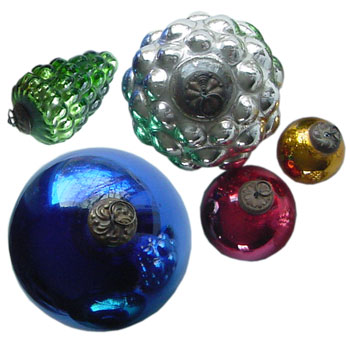
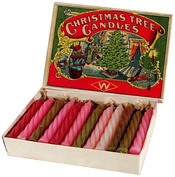
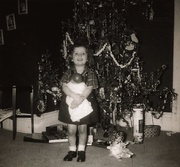 Happy Kids on Christmas Morning
Happy Kids on Christmas Morning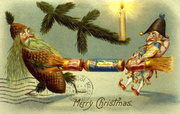
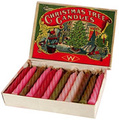 A Guide to Christmas Antiques and Vintage Christmas Decorations
A Guide to Christmas Antiques and Vintage Christmas Decorations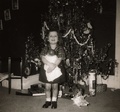 Happy Kids on Christmas Morning
Happy Kids on Christmas Morning The Charms of Christmas Ephemera and the Changing Face of Santa Claus
The Charms of Christmas Ephemera and the Changing Face of Santa Claus Christmas OrnamentsUntil the mid-1800’s, Christmas trees were mostly decorated with homemade a…
Christmas OrnamentsUntil the mid-1800’s, Christmas trees were mostly decorated with homemade a… ChristmasCollectible Christmas items range from antique hand-crafted pieces like blo…
ChristmasCollectible Christmas items range from antique hand-crafted pieces like blo… Mari Tepper: Laying it on the Line
Mari Tepper: Laying it on the Line Nice Ice: Valerie Hammond on the Genteel Charm of Vintage Canadian Costume Jewelry
Nice Ice: Valerie Hammond on the Genteel Charm of Vintage Canadian Costume Jewelry How Jim Heimann Got Crazy for California Architecture
How Jim Heimann Got Crazy for California Architecture Modernist Man: Jock Peters May Be the Most Influential Architect You've Never Heard Of
Modernist Man: Jock Peters May Be the Most Influential Architect You've Never Heard Of Meet Cute: Were Kokeshi Dolls the Models for Hello Kitty, Pokemon, and Be@rbrick?
Meet Cute: Were Kokeshi Dolls the Models for Hello Kitty, Pokemon, and Be@rbrick? When the King of Comedy Posters Set His Surreal Sights on the World of Rock 'n' Roll
When the King of Comedy Posters Set His Surreal Sights on the World of Rock 'n' Roll How One Artist Makes New Art From Old Coloring Books and Found Photos
How One Artist Makes New Art From Old Coloring Books and Found Photos Say Cheese! How Bad Photography Has Changed Our Definition of Good Pictures
Say Cheese! How Bad Photography Has Changed Our Definition of Good Pictures Middle Earthenware: One Family's Quest to Reclaim Its Place in British Pottery History
Middle Earthenware: One Family's Quest to Reclaim Its Place in British Pottery History Fancy Fowl: How an Evil Sea Captain and a Beloved Queen Made the World Crave KFC
Fancy Fowl: How an Evil Sea Captain and a Beloved Queen Made the World Crave KFC
a phenomenal article which should benefit the christmas collectors from novice to the advanced . a wonderful source of information for all to enjoy.
This was a very interesting article and put together so well. We agree with the Arnolds about new collectors and old collectors, too. Do your research, read books, take every opportunity to learn from others. (That’s why belonging to the Golden Glow has helped so many of us collectors to learn). Thank You, Jerry for taking the time to teach us all.
Wow!!!!
This is really interesting!
I am doing a research project and synthesis paper for my A.P. English class and my topic is glass christmas ornament collectibles. I was wondering if there is any way I could get in touch with Arnold and Darla to talk about their collection.
Thanks!
What a nice article about Antique Christmas! Thanks to Jerry and Darla for the time spent to do this! Good Job!
Very nice short history of the Christmas tree ornament–I enjoyed reading it and look forward to seeing all the Golden Glowers again in Milwaukee next year. To Ava James–go to the Golden Glow of Christmas Past web site and you will find much more information, join the club, receive the Directory and contact other members.
What a terrific article to learn from great collectors. Darla and Jerry share their knowledge so willingly. I have had the good fortune to visit them and get wowed by how artisticly they decorate to display their collection. I am a Glow member and have found everyone is so willing to share their area of interest and expertise. With so many experts with an interest in Christmas, you have to learn something new each convention.
Great article with good information very willingly shared. Thank you Darla and Jerry.
This “Golden Glow” group sounds VERY interesting and friendly! ;-)
What a wonderful overview of antique Christmas. Jerry and Darla are very much experts in Christmas antiques and always eager to take the time to share their knowledge and collections. The Golden Glow club is a wonderful place to meet many, many other folks like the Arnolds :-)
Wow! What an extraordinary article.
Jerry and Darla Arnold are two of the premier ‘class acts’ in Christmas collecting circles. They are loved by everyone. Their knowledge of all things Christmas is remarkable.
I didn’t notice the fact that Jerry is an expert in repair work on Christmas items so for anyone needing a repair job he is your man.
It was also nice of them to mention my book, “Christmas Rarities”, which is about rare antique German glass Chrismas ornaments. The Arnold’s were the first collectors who invited me in to their home to photograph their ornaments for my book which has been widely acclaimed by everyone. You can check it out at: http://www.christmasrarities.com.
Superb and well written article! I have known Jerry and Darla for many years and they are the nicest folks you will ever meet and I am proud to count them among my friends in the wonderful world of collecting antique Christmas. Thank you for sharing your knowledge with us all!
Re: Belsnickel
My parents were both of German descent and Santa that visited us was very similar to Belsnickel. He was scary, the kids would cry, he carried a whip, chains and a long cotton sack which on occasion would carry off one of the mischevious children. As adults, we really could not understand the “why” to our Santa being so mean and scary. But now I know! Our friends cannot understand our fear and definitely do not understand why there would be a mean Santa. He put the fear of God into us and we knew we had to be good to deserve our gifts.
Thanks for the article!
I have a box of blown glass ornaments that my Nanny brought over from scotland. I know that they are at least 60 years +. I’m just wondering if there are any websites, books or an y source of information that would be available about there value and more specific age. I don’t know much about antique anything so any tips would help.. Thanks!
I have a question for you. I have a very dear friend who had several antique ornaments. It was one of the only things he had inherited from his parents who have both since passed away. Last year, his Christmas tree took a tumble and he lost most of the ornaments. His favorite ornament was a glass ornament which depicted Santa riding a rocket ship. It was his favorite ornament. His mother was in disbelief because as she put it ” it was just a little thing a friend had included on a presnet for her. I would guess that would be in the early to late forties?? I would like to find another one of these ornaments for him. Do you have any suggestions/
Great article! I was really surprised, however, that you didn’t make any mention whatsoever of Polish ornaments- in my opinion, they are among the most beautiful of all, whether vintage or modern.
I really enjoyed your article. I learned so much. My grandmother worked for Kurt S. Adler Inc. New York, New York during the 60’s. Kurt S. Adler was a large importer/exporter of Christmas novelties since 1946. She has
left me a huge collection of ornaments and other Christmas novelties from the 60’s and 70’s. I get great joy going through them and reminiscing Christmas past with my family. It’s nice to see someone have so much passion collecting and doing it with your best friend (your wife). I wish you many more Christmases.
wE HAVE WHAT LOOKS LIKE A PRE-HISTORIC BIRD, MADE FROM GLASS BEADS AND WIRE. tHIS WAS BROUGHT HERE FROM GERMANY IN THE EARLY 1900S. wE ARE NOT SURE WHAT IT IS. a TOY ? OR SOME SORT OF DECORATION?. iS IT POSSIBLE TO SEND A PICTURE, SO THAT SOMEONE COULD IDENTIFY IT FOR US?.
THANKS
GENE
I am trying to replace some wooden Christmas ornaments of my mother’s, circa 1972 or so. I think they may be Ulbricht – can anyone give me any direction on how to search for them? I would really appreciate any advice!
@Gene B. – I noticed a link at the bottom of the comment section that suggests posting a picture in the Show & Tell gallery – good luck!
I WOULD LOVE SOME HELP FINDING THE VALUE OF SOME VERY OLD SANTA ORNAMENTS. THEY WERE PURCHASED IN JAPAN ABOUT 80 TO 100 YEARS AGO. THERE ARE 8 SANTA BELL ORNAMENTS ALL WITH A DIFFERENT PHRASE ON THEM(MERRY CHRISTMAS, HAPPY HOLIDAYS, ETC.) INSIDE THE ORNAMENT IS STAMPED JAPAN AND THE CUSTOMS LABEL IS STILL ON THE ORIGINAL BOX. THEY ARE IN EXCELLENT CONDITION EXCEPT FOR 1 WHICH IS BROKE AND REGLUED. CAN SEND PICTURES
I am looking for FAO Schwartz christmas ornaments from 1971. They are clear class wrapped with gold wire with a gold star on the bottom and showcase furry woodland creatures inside. They came in a set of 4.
in 1950 i remmber felt knee hugger elf ornament; i have been collecting them;i have not been able to find any history on them; can you help me find a place to start? thank you
I found a very detailed handpainted plastic Christmas ornament of a little girl with long blonde hair in a long red dress with white petticoat, gold bow around her neck, holly crown band on her head, holding a red parasole trimmed in white with holly on top and “Baby’s 1st Christmas” almost caligraphied on the side of the parasole. It’s so detailed complete with tiny little toes and a raised little pinky finger. When was plastic first used to make handpainted ornaments? Have you ever seen her before? Thanks!
For the past decade I have been building nativity sheds, creche stalls, etc., to suit a variety of geographical or ethnically-favored architectural styles. [www.naturesheirlooms.com] . Most of my stalls, have reflected a personal bias towards the Upper Bavarian/Tyrolean styles or the half-timbered buildings found throughout central Germany where I lived as an American Air Force officer’s son in Wiesbaden from 1962 to 1965.
You can say I got “a very delayed bug” for building “krippenstallen,” but once it took and I had the tools to venture into a field where I had no prior training, there was no turning back. There have been years, however, when sales just plummeted to the ground due to the economy or a fading appreciation of the art of nativity stalls. What galls me to no end is the increasing number of foreign imports matched by a rising number of American buyers who believe there is no identifiable American sector of nativity stall makers. There’s a small group of builders working for Bonner’s huge Christmas market in Frankenmuth, MI. Outside of their stalls which I’ve only found through the internet, are there any Americans “out there” manufacturing nativity sheds, stalls? I can’t help wondering if a lot of would-be makers backed off because of the time it takes to create both sturdy and aesthetically appealing sets because of the additional time it takes to create figurines to match their stalls. Don’t give up! After all, figurines are very personal, and many of them are hand-me-downs from other sets.
The description of Belsnickel sounds very similar to Krampus, another Christmas character from the Alpine regions of Europe.
I have two matching bird cages made of glass, painted gold. Each has a single bird in it and a built in hole for the string to go through. Now, I am saying they are glass, but I guess they could be thin plastic, but it looks like glass. My mother had these in her guarded possession since at least the early 1940s. She was always very protective of these two ornaments, and one has been repaired. Much if the paint has worn off. Does anyone know more about these? I would like to know more about them before I pass them on to grandchildren.
Looking to get a antique ornament fixed it is missing pieces of the glass and needs some tlc, any ideas?
I have 6 small plastic balls trimmed in gold with pictures on the inside. They were manufactured for Kurt S. Adler Inc., New York ,NY 10010. Made in West Germany. Santa World
I have a Santa ornament with a crown that has what I think is “KA” or ” PK” on the crown. It is not on my other Adler ornaments. Is this from the Kurt Adler collection or am I reading it wrong? Thanks for the help.